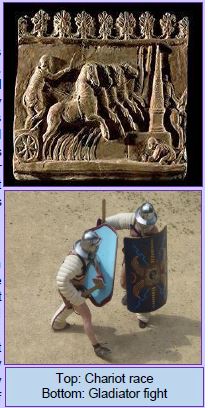By Harinder Kaur
I hope all of you are enjoying reading about different circuses as much as I am enjoying writing about them. So much contrast and variety and yet, how they all came together to give shape to the modern circus!
Apart from the theatres and amphitheatres in the city of Rome, Roman circuses were an important centre of entertainment too.
However, in Ancient Rome, circus was very different. It was more about horse and chariot races, along with staged battles, gladiatorial combat (live fight between swordsmen), and staging of trained animals.
Circus at that time was the only show where men and women sat together. Circus Maximus was the earliest circus built in the city of Rome. It was built in the Old Kingdom era and had the capacity of 2,50,000 people.
Circus Flaminius, Circus Neronis, and Circus of Maxentius were other famous circuses of the Roman era. In fact, when we talk about Roman circus, there are two things that we must know: Circus Maximus and The International Circus Festival of Italy.

Circus Maximus
Circus Maximus was actually a chariot racetrack constructed in the 6th century by the Roman kings. It is located between the Aventino and Palantine Hills. Apart from being a racetrack, it was used for many other events too, like Roman Games and gladiator fights.
It was also host to the Roman Games (Ludi Romani), the oldest games in the city. The fifteen-day long games were held every year in September with series of chariot races and military processions. Rome had many other games too and most of them had at least one day or more at the Circus Maximus.
Circus Maximus was a beautiful piece of architecture. It had the following features:
1.A huge track measuring 540 x 8 metres, and covered with sand.
2.At the open end of the track, it had 12 starting gates forming the shape of an arc for the chariots.
3.A decorated barrier in the centre of the track.
- Each end of the track had conical turning posts.
5.Lap markers which were turned to mark the completion of each of the seven circuits in a race.
The chariots were also colour coded and could be pulled by 4, 6, 8 or 12 horses. Totila, the Ostrogoth King had held the last race here in 549 CE. After that, it was abandoned.
It was later excavated and remodelled in the 20th century and till today it continues to be one of the most important public spaces. A lot of events like music concerts and rallies are held there.

